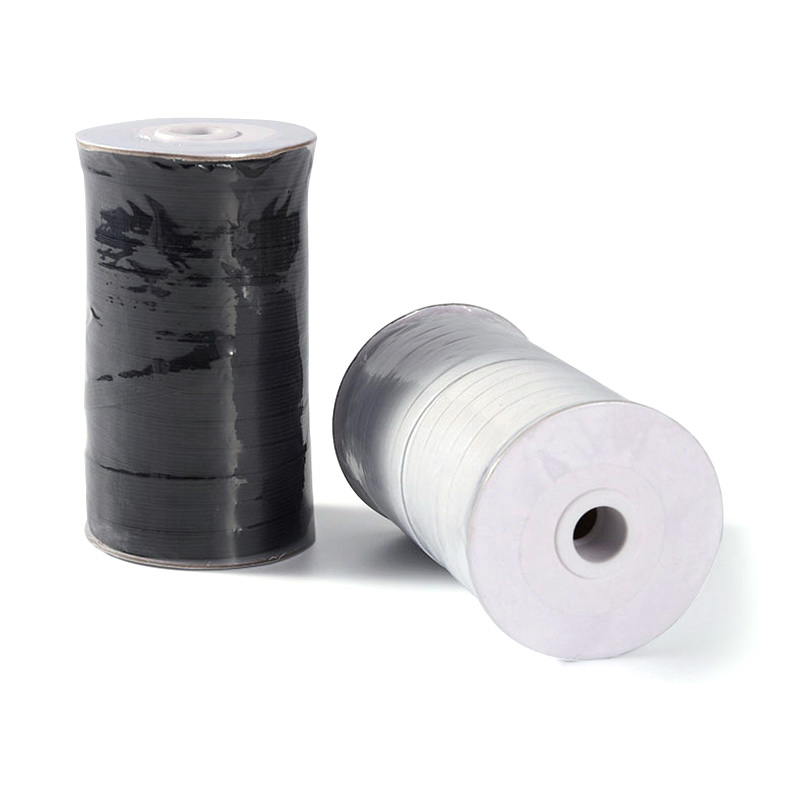Industry
 By Admin
By Admin
How Webbing Straps Are Produced For Industrial And Fashion Use
Webbing straps have become an essential component across various industries, from fashion to industrial applications. Their versatility, strength, and flexibility make them a popular choice in products ranging from backpacks and safety harnesses to apparel and face masks. Understanding how webbing straps are produced can shed light on why certain types, such as stretch binding tape, shoulder strap elastic, and elastic straps for masks, are so widely used.

The production of webbing straps begins with selecting the right raw materials. Typically, polyester, nylon, and polypropylene fibers are chosen for their durability and resistance to wear and tear. For applications requiring elasticity, materials with stretch properties are blended or specially knitted to create stretch binding tape and shoulder strap elastic. These materials provide the necessary flexibility without compromising strength.
Stretch binding tape is a type of elastic webbing widely used in garment manufacturing and packaging. Its ability to stretch and recover makes it ideal for applications where flexibility is required. During production, the fibers are woven or knitted under tension to achieve a balance between elasticity and strength. This process ensures the tape maintains its shape even after repeated stretching. Stretch binding tape is often found in waistbands, cuffs, and other areas that require a snug fit.
Shoulder strap elastic is another specialized type of webbing designed to provide comfortable support and adjustability. Unlike rigid webbing, shoulder strap elastic allows for movement without digging into the skin, which is important in products like bags, bras, and sportswear. Production involves knitting or weaving the elastic fibers with a particular structure that enhances stretchability along the strap's length. Careful tension control during manufacturing is key to ensuring that shoulder strap elastic maintains consistent elasticity over time.
Elastic straps for masks have gained prominence recently, especially in the health and safety sector. These straps need to be both soft and durable to hold face masks securely without causing discomfort. The manufacturing process often involves a finer weave or knit compared to heavier-duty webbings, focusing on softness and skin-friendliness. Elastic straps for masks also require a good stretch ratio to fit various face sizes comfortably. Their production incorporates quality control checks to ensure uniform stretch and resistance to deformation, which is essential for repeated use.
Webbing strap production is not limited to weaving and knitting alone. Dyeing, finishing, and quality control are critical steps that contribute to the final product's performance. For example, stretch binding tape is often dyed using techniques that ensure color fastness and resistance to washing. This is important for maintaining the appearance and integrity of garments or products over time. Similarly, shoulder strap elastic may undergo finishing processes that enhance its softness or moisture-wicking capabilities, adding to user comfort.
The production line includes various machines like shuttle looms, circular knitting machines, and specialized elastic knitting machines. These tools allow manufacturers to create webbing straps in different widths, thicknesses, and stretch levels to meet specific requirements. For elastic straps for masks, machines capable of producing narrow, soft, and durable elastic tapes are preferred. Adjustments in machine settings help achieve the desired balance between stretch and recovery, which is crucial for the strap's function.
After manufacturing, the webbing straps go through rigorous quality testing. Stretch binding tape, for instance, is tested for tensile strength, elasticity, and shrinkage. Shoulder strap elastic is checked to ensure it does not lose elasticity after extended use or exposure to heat and moisture. Elastic straps for masks are tested for softness, elasticity, and durability to ensure they provide comfort without breaking or causing irritation.
Webbing straps are often customized to fit specific industrial or fashion needs. Stretch binding tape can be produced in various colors, widths, and patterns to complement garment designs. Shoulder strap elastic can be integrated with adjustable hardware to enhance functionality in backpacks or bras. Elastic straps for masks may feature antimicrobial finishes or be produced in hypoallergenic materials to address health concerns.
The versatility of webbing straps like stretch binding tape, shoulder strap elastic, and elastic straps for masks reflects the careful balance of production techniques and material selection. Their ability to combine stretch and strength makes them suitable for applications demanding both flexibility and durability. Whether in industrial equipment, fashion accessories, or personal protective gear, these webbing straps play a vital role in product performance.



 English
English Español
Español عربى
عربى Tiếng Việt
Tiếng Việt

